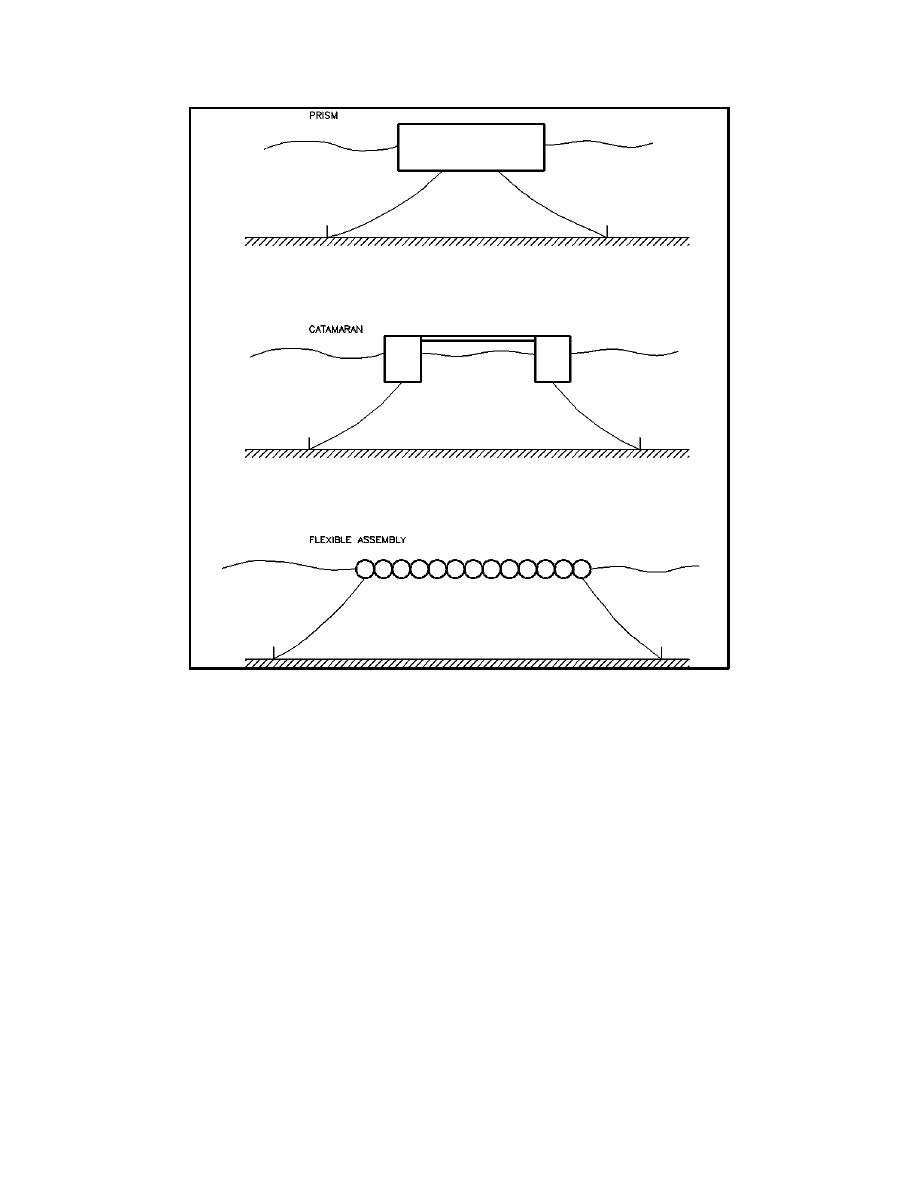
EM 1110-2-1100 (Part II)
30 Apr 02
Figure II-7-20. Common types of floating breakwaters
(d) The wave-induced loading on the floating breakwater's mooring/anchor system is also an important
design concern. Hales (1981) and Harms et al. (1982) present mooring load data for various types of floating
breakwaters. The peak mooring load that develops for a given breakwater geometry and mooring
arrangement depends primarily on the incident wave height and increases significantly as the wave height
increases; the wave period or length is only of secondary importance in determining the mooring load. If the
mooring load cannot be adequately estimated from published information on similar breakwaters, physical
model tests may be required to determine these loads for the anticipated design wave conditions.
(5) Wave barriers.
(a) Vertical thin semirigid barriers are used as breakwaters at some harbors, particularly where wave
loading is relatively small and wave reflection would not be a problem. For some small-craft harbor
installations, the barrier is open at the bottom, which allows water to circulate in and out of the harbor and
reduces structure costs (see Gilman and Nottingham (1992) and Lott and Hurtienne (1992). If the incident
wave period is relatively short (d/L relatively large), wave action is focused near the surface and wave
transmission would be relatively small.
II-7-24
Harbor Hydrodynamics


 Previous Page
Previous Page
